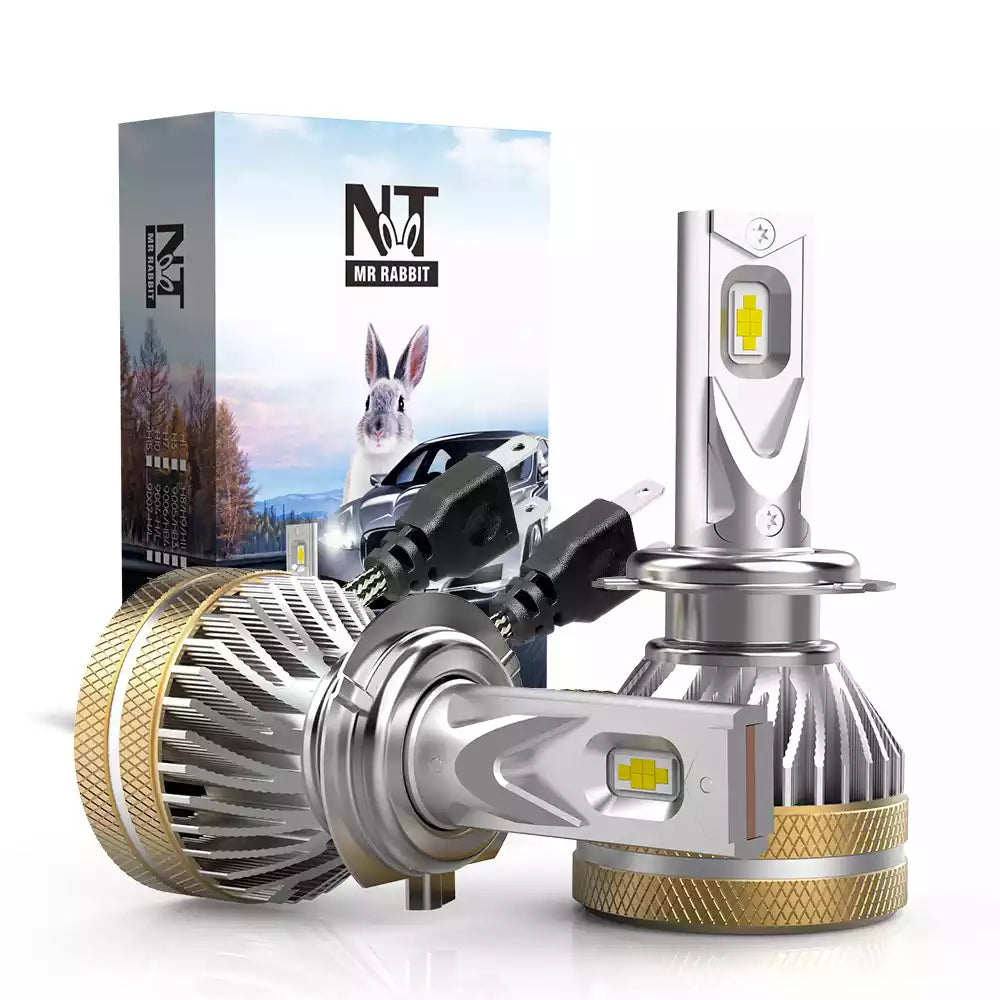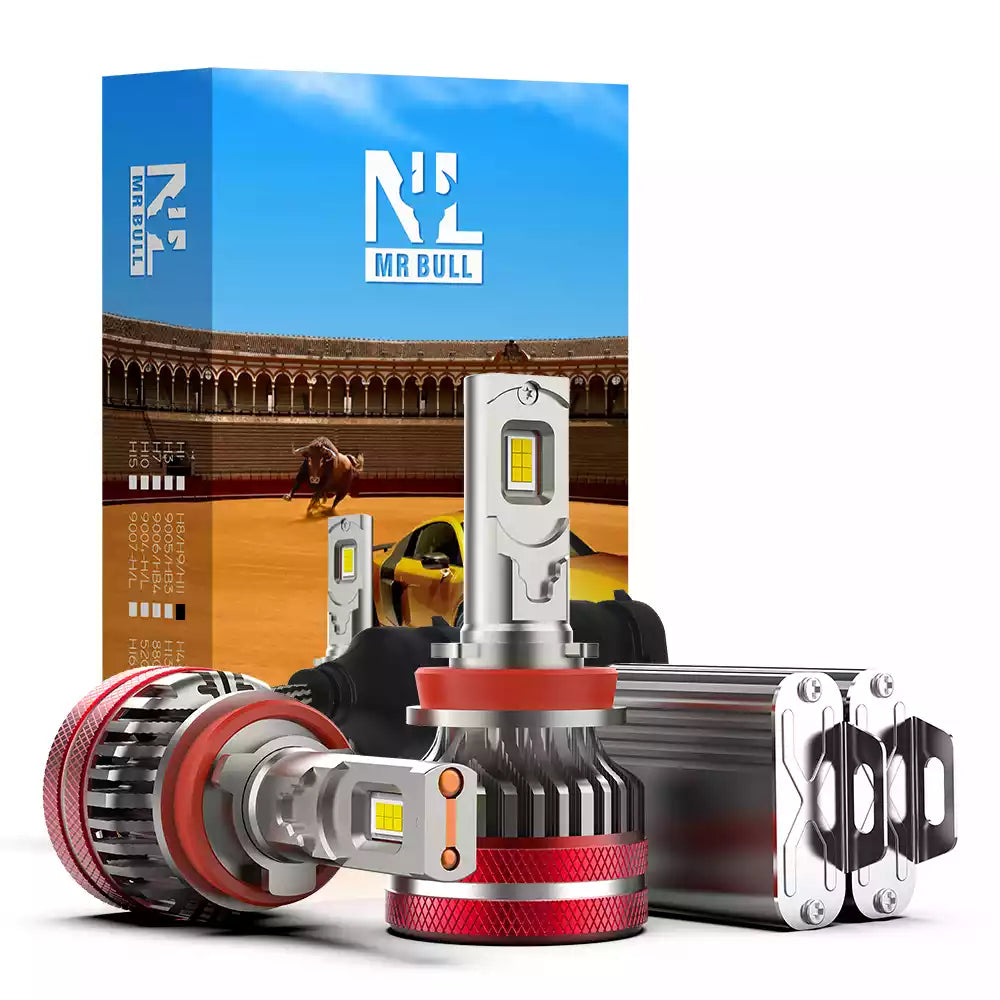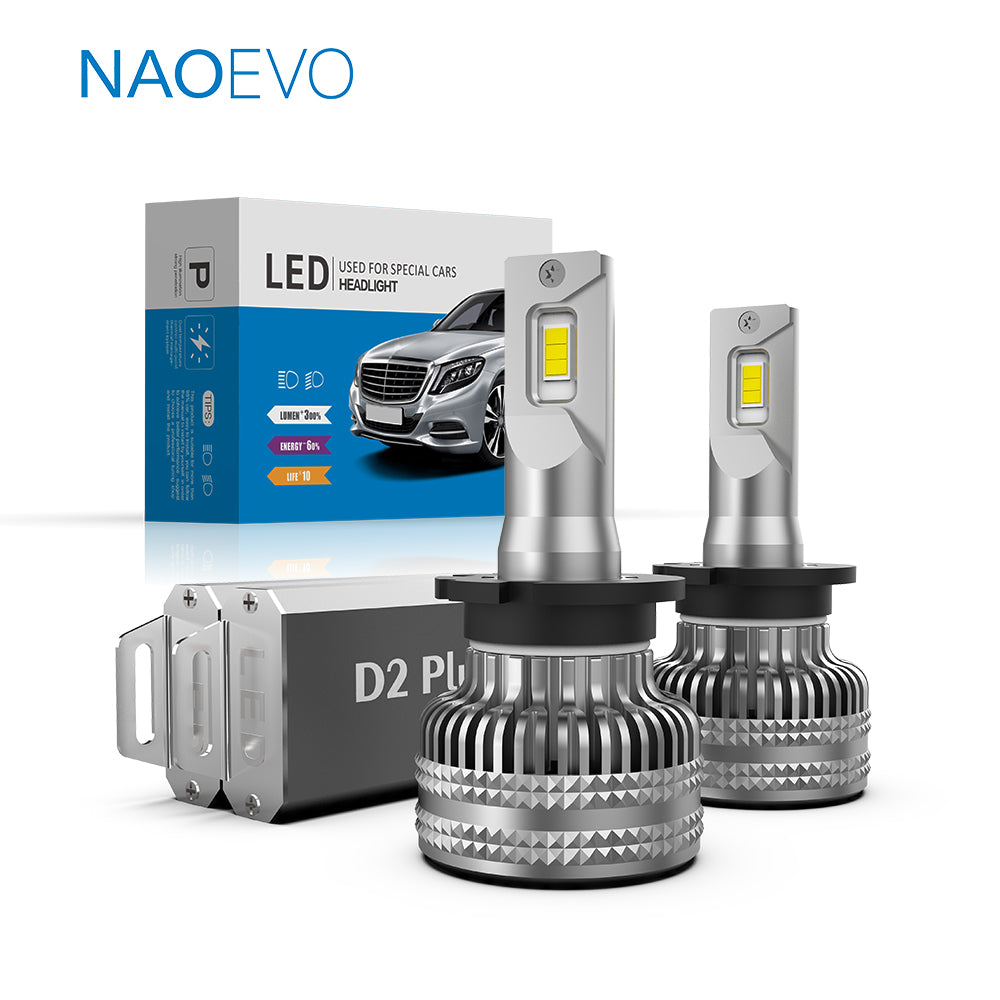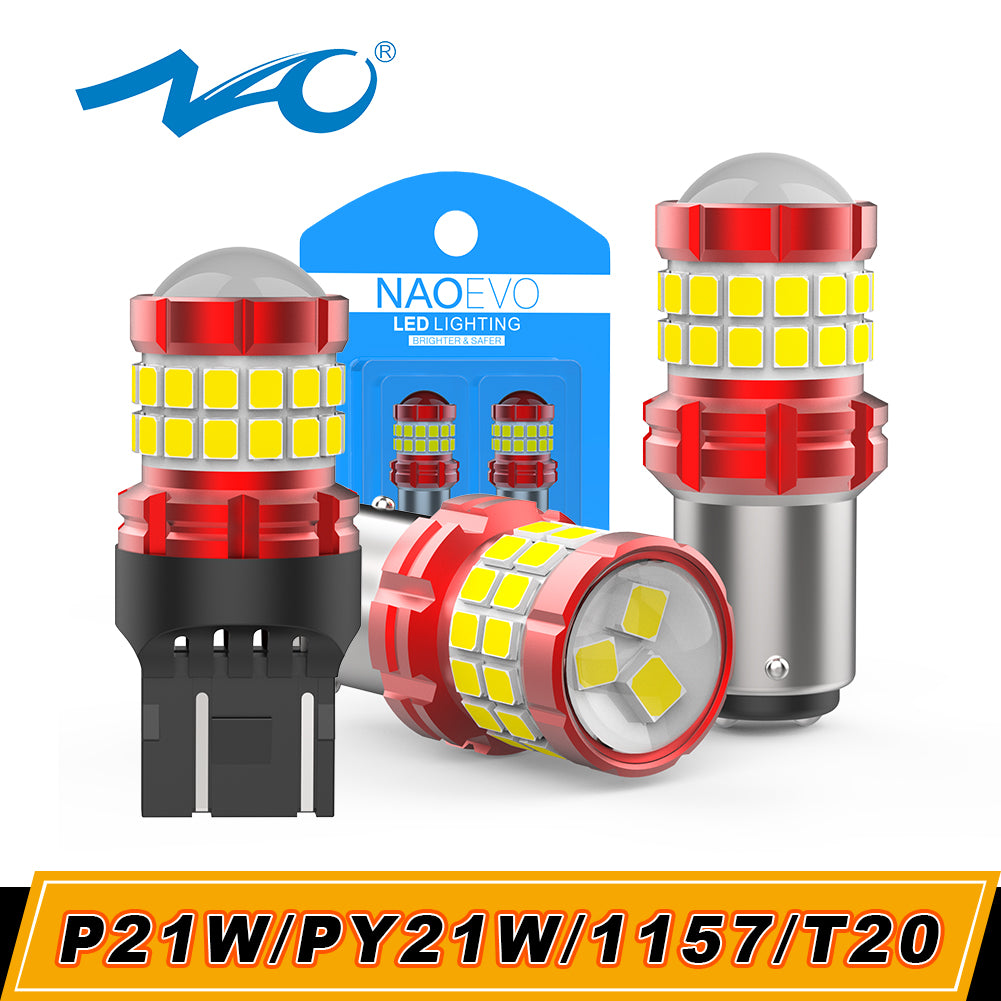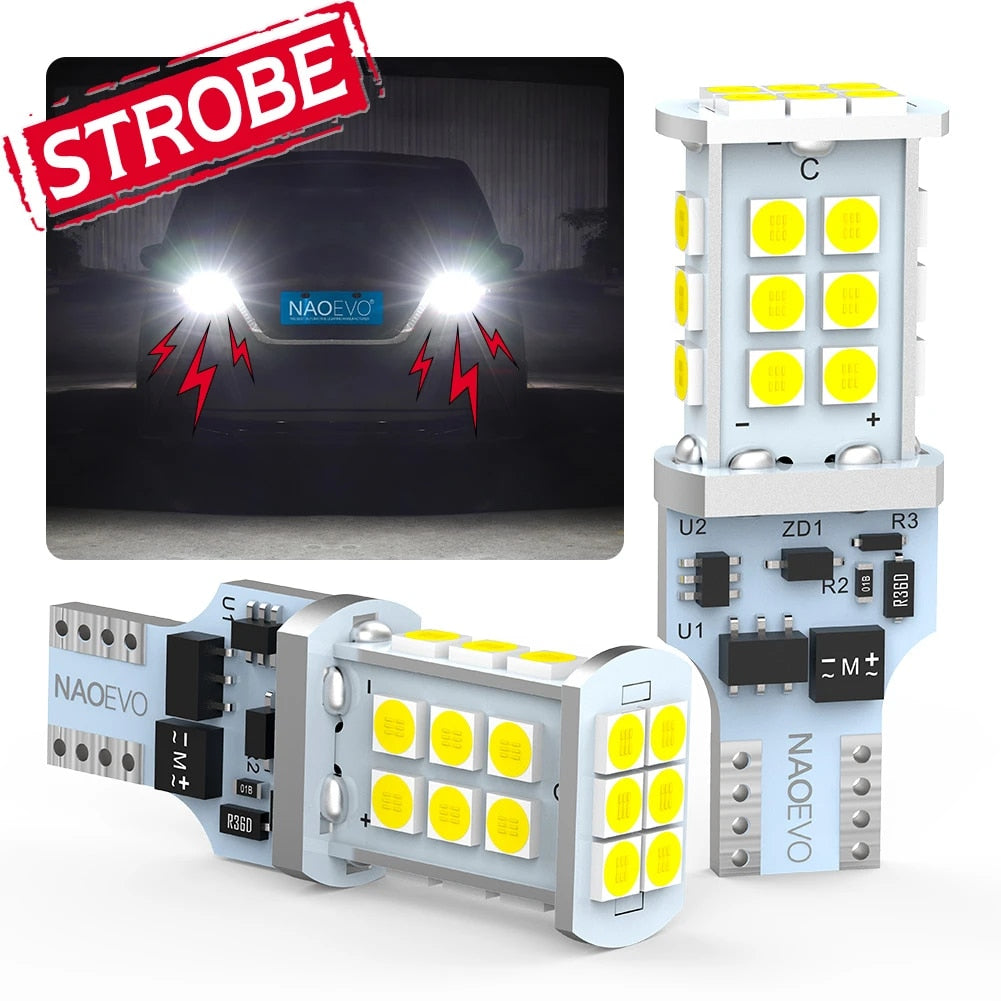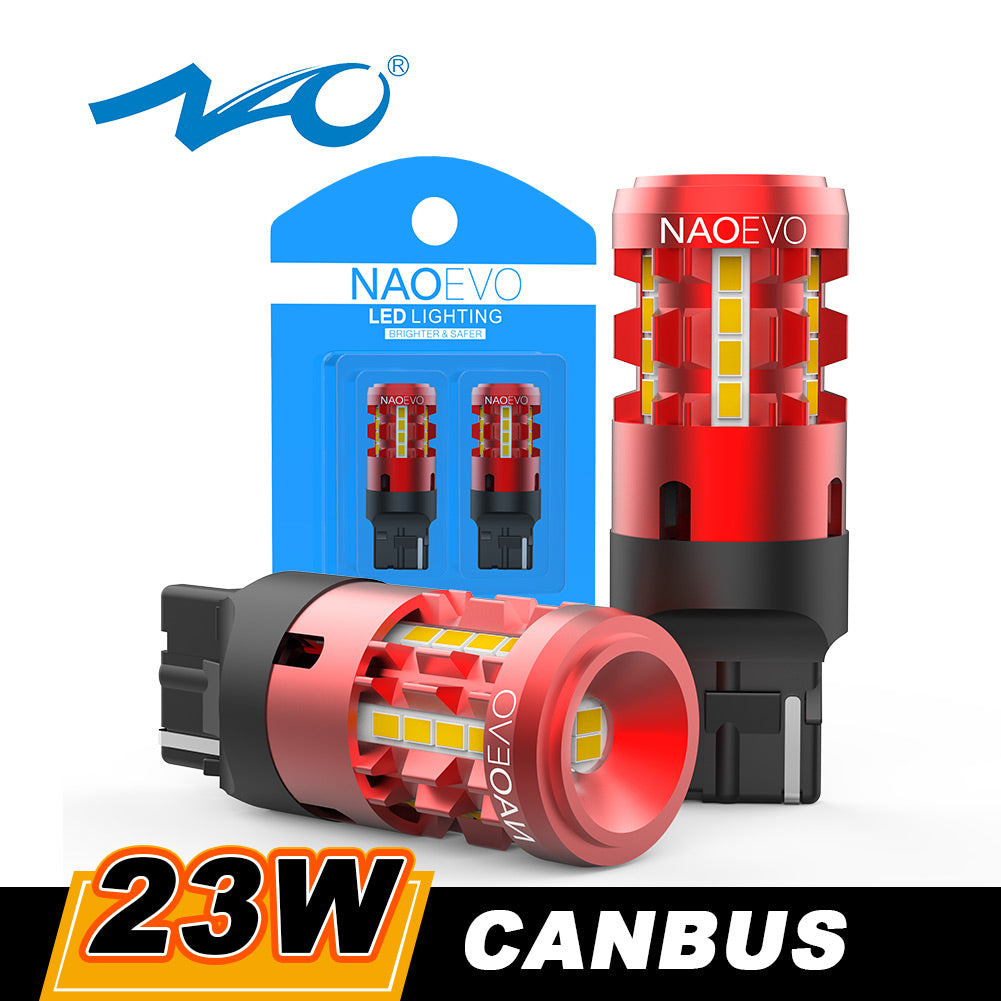Menu
Your cart is empty
Looks like you haven't added anything to your cart yet
Featured products
FAN OR FANLESS? HOW TO CHOOSE THE RIGHT HEADLIGHT BULB?
Many car owners continuously upgrade their factory headlights by switching halogen to LED. LED headlight bulbs have been popular in recent years because of their efficiency, energy-saving, brightness, and sustainability for a long time. However, the only disadvantage of LED headlights is the excessive heat. LED headlight components create a large amount of heat to maintain optimal light output and maximize the headlights operating life.
Two types of components can be used to cool the LED luminaries, which are fanless cooling mechanisms and fan-powered cooling mechanisms. Both of them are designed to transfer the heat from the bulbs.
Either an active cooling mechanism or a passive cooling mechanism could affect the performance of the LED bulb and your driving experience. Here, we'll discuss the pros and cons of fan vs. fanless LED headlight bulbs and see the relationship between heat and LED performance.
|
Content
#1. Advantages of Fan and Fanless LED Bulbs |
Advantages of Fan and Fanless LED Bulbs
No matter headlight bulb is equipped with a fan or without a fan. They are both designed to achieve a better heat dissipation for the LED light. They have different performances concerning the brightness, power, cooling, and operation of the bulb.
| Fan LED Headlight Bulb | Fanless LED Headlight Bulb | |
| Brightness | Able to produce a high brightness | Produce a comparatively consistent brightness |
| Power | Need to consume more power for operation | Does not need extra power to operate the fan, more energy saving than fan LED lights |
| Cooling | They come with built-in high-speed fan, the cooling is faster than fanless LED bulb | It uses wind and other natural elements along with a heatsink to transfer heat away from the chip, the cooling is not fast comparing to fan LED bulb |
| Lifespan | LED bulbs give off more heat to illuminate brighter, may face broken fan issue, they are not so long as compared to fanless | It has a longer lifespan than fan LED bulbs |
| Appearance | It has a simple and compact structure | A little bit complicated structure, the heat sink will be a little bigger than fan LED bulbs |
| Operation | It can produce a loud noise | Noiseless |
| Maintenance | May suffer from fan failure | No need extra maintenance |
About Fan and Fanless LED Headlights
A headlight bulb with poor heat dissipation can cause the fixture to decrease its performance and life. There are two types of methods used to cool down the bulb: the first is LED headlight bulb with fan or an active cooling mechanism, and the second is a fanless LED bulb or passive cooling mechanism.
In this case, the fan LED bulb is structured to produce a brighter and stronger light compared to a passive LED headlight bulb, while the fanless LED often uses a heat sink to radiate the heat and generate little power with relatively low brightness.
Go on reading, we will see the pros and cons of fan LED headlights, the advantages, and shortcomings of fanless LED bulbs, and finally, we will push out the most recommended fan and fanless LED headlight bulbs.
Fanless LED Headlight Bulb (Passive Cooling)
The main advantage of a fanless LED headlight bulb is lower cost and better energy efficiency. Besides, the heat sink from high-quality fanless LED bulbs provides a high level of heat dissipation, which uses the natural wind to ease the heat by achieving high efficiency.
Pros and Cons of Fanless LED bulb

Fan LED Headlight Bulb (Active Cooling)
LED headlight bulbs with fans rely on external sources to transfer the heat. This cooling method accelerates the fluid flow rate at which heat is removed. It is one of the most effective ways to remove heat by using fans to achieve a maximal output.
Installing the fan inside the heat sink of the LED bulb makes the structure stable and durable. However, the biggest drawback is that the operating cost is relatively higher than fanless LED headlight kits. It can not withstand the heat of too much high power because this cooling design is concerned with the heat transfer of aluminum, copper substrate, and other thermal design.
With the advancement of cooling technology, some quality LED headlight bulbs are now equipped with copper heat pipes for transferring the heat quickly and efficiently. This cooling method is about 2-3 times higher than that pure fan cooling LED bulb.
Pros and Cons of Fan LED Headlight Bulb

From the above chart, we can see that both fan and fanless LED headlight bulbs have pros and cons. You can choose either of them if they meet your requirements.
Why LED Car Bulbs Need a Better Heat Management
Though LED headlight bulbs have upgraded a lot in brightness, heat dissipation, and lifespan, some people still think that LED bulbs are energy-saving and didn’t create much heat. The truth is completely the opposite: LED headlight bulbs do indeed generate heat! When you are looking for LED headlight bulbs, you need a quality chip and a better way to dissipate the heat away because the high temperature will affect the performance of LED bulbs.
1. When the LED headlight bulb is operated with its maximum rated temperature, it will initiate a variety of excessive heat stress, reducing the light efficiency, performance, and even the longevity of the vehicle's LED headlight.
2. When the temperature of the LED chips exceeds that range, it will reduce your LED headlight bulb color rendering index, a measure of how actual the color of the LED bulb is compared with industry standards. For example, your LED must be yellow or white. When the temperature exceeds that range, the brightness will increase and quickly damage your headlight system.
3. High temperature will reduce the output. Some LED headlight brands on the market claim that their bulbs can reach to 10,000 lumens, but when the bulbs are lighting, the power drops drastically so as the brightness. Thus, excessive heat also reflects that the passive or active cooling mechanism may fail to control a high temperature, resulting in a reduction in light output.
Different Types of Active Cooling
You must have observed that most high brightness LED headlight bulbs will be equipped with a fan to dissipate the heat. However, do you know that different types of cooling fans will have different performances? The active cooling mechanism can be mainly categorized into 3 forms: Hydraulic fan dissipation, dual ball-bearing fan dissipation, turbofan dissipation
Hydraulic fan

The Hydraulic fan is a kind of cooling technology in which a unique spiral groove is engraved in the bearing. When the bearing rotates, the lubricating oil is evenly distributed to support the shaft to reduce friction and noise.
Pros: The average lifespan of a hydraulic fan can access to 40,000 hours. They have been widely used for LED headlight bulb cooling on the market with low noise and long life.
Cons: After a certain period of use, the lubricating oil will evaporate, resulting from wear and tear, reducing the lifespan.
Dual ball-bearing fan

A double ball-bearing fan is a heat dissipation technology that uses two ball bearings in the form of rolling friction. There are several tiny steel balls in the bearing around the axis. When the fan rotates, the steel balls also rotate.
Pros: Dual ball-bearing fan has a longer lifespan with over 50,000 hours and good anti-aging performance, high speed, and ample airflow.
Cons: Dual ball bearing fans are expensive to manufacture and make the most noise at the same speed.
Turbofan

Turbofan is driven by a motor impeller rotation so that the gas flow to the impeller is thrown around. The movement of the turbofan creates a pressure difference, and the new gas is sucked into the impeller under the action of the pressure difference and then continuously discharged from the fan.
Pros: Turbofan can create a quick airflow in a small space, achieving a high cooling efficiency.
Cons: High design requirements, the processing accuracy is higher than the ordinary fan, when there’s dust adhering to the fan blades, it will affect its speed and make the fan blade imbalance, and finally create a loud noise.
If you prefer LED headlight bulbs that run a high power to produce a brighter light. It is better to choose the LED headlight bulb with a fan.
Best LED Headlight Bulb with Fan!
NAOEVO Max3 LED Headlight Bulb

What sets Max3 LED bulbs apart from other bulbs is their improved heat dissipation technology. I It is pretty common to find that most LED headlight bulbs dissipate heat using a cooling fan and aluminum heat sink. However, in addition to having a fan and heat sink, these brand new Max3 LED bulbs add dual copper heat pipes inside the bulbs to achieve efficient cooling. No more worrying about LED headlight bulbs melting your dust cover, 20W of heat will be transferred by each copper heat pipe.

As mentioned above, if the LED bulbs have poor heat dissipation, their brightness, lifespan, and light beam pattern are empty talk. Max3 LED headlight achieves a more efficient heat dissipation (copper heat pipes, large aluminum heat sink, 8500RPM high-speed mute fan) than other LED bulbs.

With better thermal management, Max3 LED headlight bulbs can carry 120W 13,000Lumens high power and run for over 50,000 hours without damaging your headlight systems.
Specification
Power: 120W 13000LM Pair
Lifespan: Over 50,000 hours
Input voltage: DC9-16V
Chip: Flip Chip
Waterproof: IP67
Color: Cool White
Warranty: 2 Years
Best Fanless LED Headlight Bulb
If you have been driving a car for some time and are annoyed by the die-hard fan, you know the value of a fanless LED headlight bulb. There are plenty of bright LED headlight bulbs that maximize longevity without using a fan, so how to choose quality fanless LED headlight bulbs? Here you will get the answer.
NAOEVO NF Series LED Headlight Bulb

Some LED headlight bulb manufacturers are likely to produce fanless LED headlight bulbs with poor heat dissipation, the outcome is that the bulbs are easily burnt out due to the excessive heat. While others produce fanless headlight bulbs that come with a giant heatsink, making them difficult to install.

You're on a budget doesn't mean quality fanless LED headlights aren't available. They are. NF fanless LED bulb is the best choice for upgrading your halogens. NAOEVO produces them, a reliable headlight bulb supplier to give you an idea of quality. These NF LED bulbs, and a solid one-piece aviation aluminum body helps to maximize surface area for optimal cooling, thus enhancing the lifespan of over 50,000 hours.

If you are looking for fanless LED headlight bulbs that also provide a high brightness, NF LED headlight bulbs are still the optimum choice for you! NF LED bulbs are equipped with 9pics 43MIL flip chips, producing a sustainable output of 40W 4800LM (Pair). These bulbs provide a wide and focus light for you to see better at night.
FAQs
💬Fan vs fanless LED headlight bulb which is better?
It depends on your needs. We can’t tell which is better cause both of them have their advantages and disadvantages:
1. Compared with fan LED headlight bulbs, fanless LED headlights are more cost-effective and have better energy efficiency.
2. Fanless LED headlight bulb performs a noiseless operation and provides a superior lighting performance.
3. Fan LED headlights can illuminate brighter and stronger light than fanless LED headlight bulbs.
4. Fan LED headlight bulbs do not use external cooling components to power the light, which means that they can transfer the heat quickly from the LED light.
💬Do LED headlights draw less power?
Yes, but you should notice that compare to halogen and incandescent bulbs, LED headlights can transfer 80% of the energy into light with less energy waste, while halogen headlights can only transfer 20% of energy into light. LED headlights are more energy-efficient. For example, to produce around 2000 lumens of light, LED bulbs will draw ~ 20 watts while halogens will draw ~125 watts.
💬How long does fanless LED headlight bulb last?
One of the biggest advantages of fanless LED bulbs is having a relatively long lifespan than fan LED headlight bulbs. The lifespan of fanless LED headlights can attain over 50,000 hours. Quality fanless LED bulbs have an advanced heat dissipation structure, making them cost-effective, not need much power, and have high lighting performance.
💬Which is the best LED headlight bulb?
Buying the best LED headlight bulbs will offer you an excellent brightness, perfect beam pattern and high durability. Best LED headlights mostly come from reliable brands, such as Philips X-tremeUltinon, Osram LEDriving and NAOEVO Max3 LED replacement bulbs.
💬What is the best fanless LED headlight bulb
NAOEVO has come up with this NF series fanless LED bulbs that are completely noiseless, and it is just ideal for plug and play. They offer 6500K bright white light. The product is great for its high quality LED output. With 6063 aluminum heat sink to diffuse the heat, its heat dissipation system works well and the lights last longer too.
💬Will LED headlight bulbs melt the housing?
When LED headlight bulbs are working, they create excessive heat. If LED bulbs are equipped quality cooling components such as high-speed mute fan, aluminum heat sink, copper heat pipe and copper substrate, they can remove the heat faster and won’t damage your headlight housing. Even inferior LED headlights are not so hot as to melt the housing, but overheating and suffer a much shorter life.
💬Do LED headlights need a fan?
Originally, it is better to have a fan for heat dissipation for some high power LED headlight bulbs, when the bulbs are working, they will generate lots of heat, the fan helps to circulate the air faster.
- Choosing a selection results in a full page refresh.









